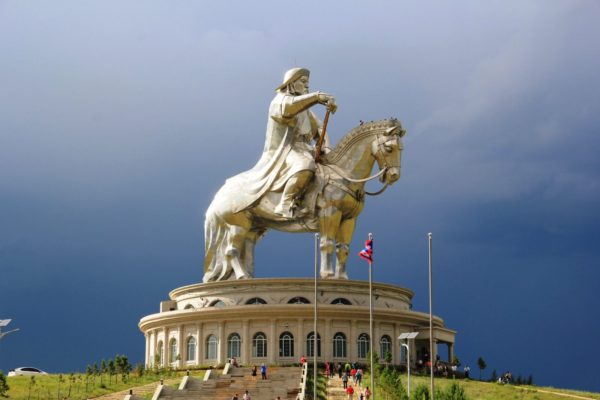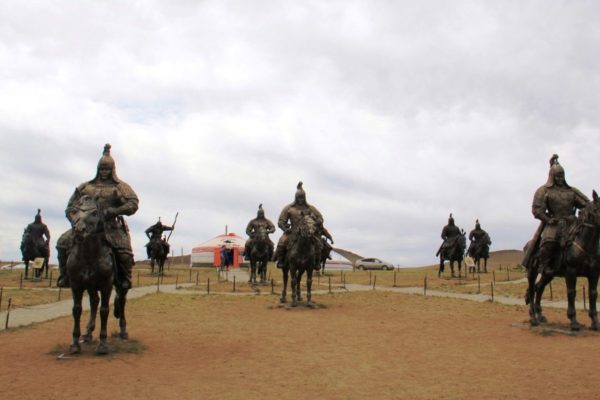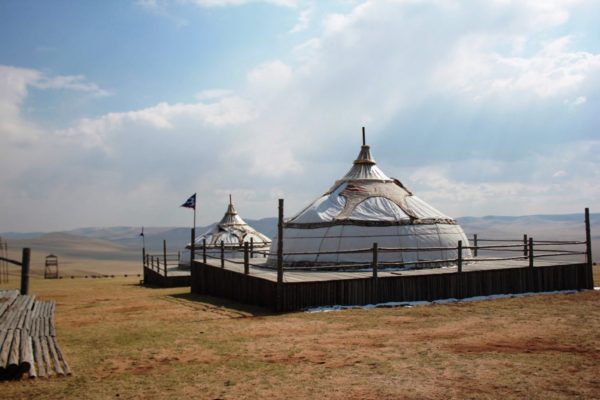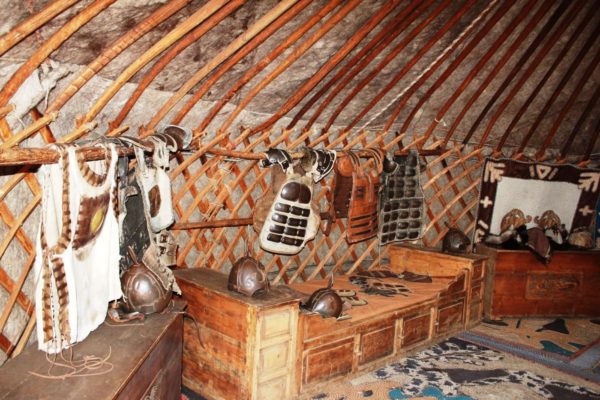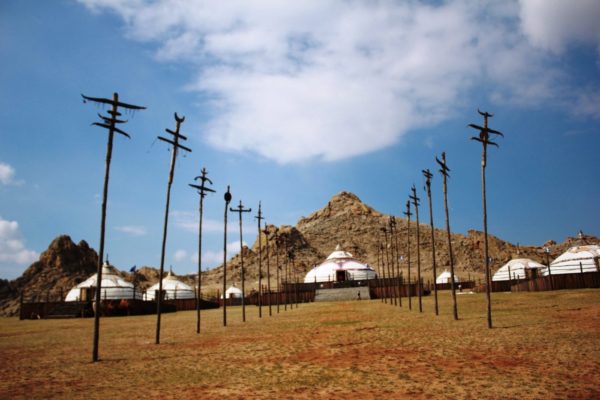Equestrian Statue of Genghis Khan
The Genghis Khan Statue Complex is a must-visit place located in Tsonjinboldog, Erdene Sum, Tov Province. This complex is a remarkable masterpiece of architecture, built with 250 tons of steel, and stands at a towering height of 40 meters. The statue of Genghis Khan holding his whip is a remarkable sight to behold. The Genghis Khan Statue Complex is also known as the “Golden Whip” and is spread out over an area of 212 hectares.
One of the main attractions of this complex is the horse-drawn elevator that takes visitors to the top of the statue. From there, one can witness the breathtaking natural scenery of the nearby plains and the historical monuments related to the history of Genghis Khan, such as Mount Burhan Khaldun, the Deluun Boldog, and Khuduu Aral.
Structure
The circular building at the base of the statue is built with 36 columns, representing the 36 kings of the Golden Horde. Inside the building, visitors can enjoy various entertainment and service institutions, such as an art gallery, a museum that displays artifacts from the Hun Empire, a restaurant, a conference hall, a meeting room, and a gift shop.
The Genghis Khan Statue Complex is still under development, and once completed, it will feature 10,000 horse statues of 13th-century heroes, generals, and soldiers. Additionally, 200 houses will be built with hotels showcasing modern technological development, golf courses, open-air theaters, artificial lakes, and sports fields. The complex also aims to plant a million trees in the surrounding areas.
The Tsonjin Boldog also has a fascinating legend associated with it. According to the legend, Temujin Khereid’s king Tooril found a whip while raiding the area for help. He was delighted to find a horse harness that became a man’s husband. Based on this legend, Genghis Khan was created with his whip pointed, making it a significant attraction.
13th Century Complex
Apart from the Genghis Khan Statue Complex, visitors can also, explore the 13th-century complex located more than 40 km southeast of the statue. This complex comprises six camps built to showcase how Mongolians lived and worked during that time, providing visitors with a unique opportunity to experience life as it was during the 13th century.
The six camps include the Relay Station Camp, Craftsman Camp, Books Camp, Shepherd’s Camp, Shaman’s Camp, and the King’s House. Each camp offers a unique experience, from learning about the life of artisans to experiencing shaman worship rituals, traditional folk performances related to horses and cattle, and indulging in delicious Mongolian national dishes and drinks.
Overall, the Genghis Khan Statue Complex and the 13th-century complex offer visitors an exciting insight into the history and culture of Mongolia.


